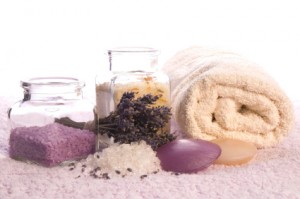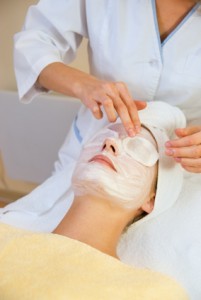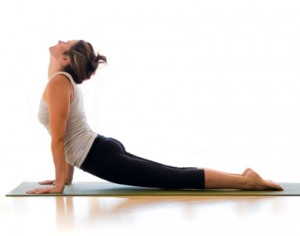Good Night Beauty
A good night’s sleep is an essential part of your beauty regimen and does more for your good looks than the best balm or treatment. While you sleep, blood continuously replenishes your skin, giving it a rosy glow. A well-rested complexion is also less prone to breakouts. Of course, night time is also the right time to treat your body to some extra conditioning and moisture. Here are a few recipes to try that you can use right before you get into bed.
Nighttime lotion
This rich lotion is packed with oils and vitamins. Massage it into your body and face before going to bed at night and you’ll wake up with soft, smooth skin that looks and feels amazing. Make sure to remove and jewelry and wash your skin before applying it.
- ¼ tsp baking soda
- ½ cup distilled water
- 1 Tbls vitamin E oil
- 2 Tbls olive oil
- 1 Tbls avocado oil
- 1 tsp wheat germ oil
- 1 Tbls grated beeswax
In a glass container, dissolve baking soda in the water and set aside. In a small saucepan or microwave-safe dish, mix the oils and wax together and heat gently (use the stovetop or microwave) until wax is melted. Heat the soda-water mixture but do not boil and then pour it into a blender. Blend on slow speed, slowly adding the oil-wax mixture in a steady stream. Mix well and transfer to a heat-resistant container. Allow the mixture to cool. (The lotion will thicken as it cools.) Yield: 6 ounces
Lullaby massage oil
With lavender and chamomile in the mix, this massage oil Is the perfect cure for a bad case of insomnia. The almond oil conditions skin.
- 1 Tbls dried chamomile flowers
- ½ cup sweet almond oil
- 5 drops essential oil of lavender
Place chamomile flowers in a small saucepan and pour the almond oil over them. Gently warm the oil for a few minutes, but do not boil. Allow the oil to cool; then strain out the flowers. Add the lavender essential oil and pour into a clean bottle. To use: Slowly massage a small amount onto dry skin or tired muscles. Yield: 4 ounces
Relaxing lavender bath
 This is a perfect herbal bath to ease your mind and body after a full day. Along with lavender, it contains oatmeal and baking soda to soothe dry, sensitive skin. Substitute dried chamomile for the lavender in this recipe if you prefer.
This is a perfect herbal bath to ease your mind and body after a full day. Along with lavender, it contains oatmeal and baking soda to soothe dry, sensitive skin. Substitute dried chamomile for the lavender in this recipe if you prefer.
- 1 cup dried lavender flowers
- 2 cups oatmeal
- ½ cup baking soda
In a blender or food processor combine all ingredients and process until you have a smooth, fine powder. To use: Pour ½ cup into your bath as you fill the tub. Yield: 28 ounces.
Eye rest pillows
 These pretty silk pillows are simple to make and offer an effective way to ease eye strain and relax at the end of the day. You can find flaxseeds at most grocery and natural food stores. If you can’t find silk fabric, try using old scarves.
These pretty silk pillows are simple to make and offer an effective way to ease eye strain and relax at the end of the day. You can find flaxseeds at most grocery and natural food stores. If you can’t find silk fabric, try using old scarves.
- 2 rectangle pieces of silky material, 5” x9”
- 1 cub flaxseeds
- 1 Tbls dried lavender
Stitch the material together to form a small sack, and fill it with flaxseeds and lavender. Stitch the remaining end close. To use: Lie down with the pillow over your eyes. To calm inflamed skin, cool the pillow by placing it in the refrigerator.
Evening nail oil
Massage this rich combination of natural oils onto your nails before going to bed to strengthen and condition them. Do this regularly and you’ll see improvements in a few short weeks – even with dry, cracked nails. Find liquid lecithin at your local natural food store.
- 1 Tbls olive oil
- 2 tsps liquid lecithin
- ¼ tsp vitamin E oil
Combine all ingredients and mix well. To use: Dab a small amount on your fingers and rub thoroughly into your nails. Yield: ½ ounce.
Tips for a Good Night’s Rest
Stick to a sleep schedule to keep your biological clock in sync.
Avoid late dinners.
Exercise at least four times a week, but avoid workouts close to bedtime.
Use your bedroom only for sleep, not for surfing the web or work.
Practice a sleep ritual like a warm bath, reading, or listening to music before going to bed.
Have a very restful sleep.
Simple Sciatica Exercises.
A large number of sciatica exercises are available to choose from, but if you are in significant pain, it is a good idea to stick with a simple, easy to implement plan. One or two exercises done frequently can be far more effective than struggling with a complex program of multiple exercises.
 In order to determine which exercise will be of most benefit to you, it is necessary to try to figure out if you have true sciatica caused by a lumbar disc herniation, or if you have “piriformis syndrome”, which produces sciatica-like symptoms but is due to excessive contraction of a muscle in the buttock area.
In order to determine which exercise will be of most benefit to you, it is necessary to try to figure out if you have true sciatica caused by a lumbar disc herniation, or if you have “piriformis syndrome”, which produces sciatica-like symptoms but is due to excessive contraction of a muscle in the buttock area.
One simple way to tell the difference is to sit in a firm chair to do a couple of basic tests. In the sitting position, try straightening your knee on the painful side, so that your leg is parallel to the floor. If this increases your symptoms, chances are you have true sciatica related to a disc problem.
The second test used to differentiate between disc-related sciatica and piriformis syndrome begins by pulling your knee toward the same-side shoulder. Begin by first bringing the knee on the painful side toward the shoulder on the same side. Then release the leg slightly and pull the knee toward the opposite shoulder. If the symptoms increase more when you pull the knee toward the opposite shoulder than when you pulled it toward the same side shoulder, it is likely that you have piriformis syndrome. It should be noted that it is possible to have both true sciatica and piriformis syndrome at the same time.
Once you determine whether you have true sciatica or piriformis syndrome, or both, you can usually get considerable relief from just a single exercise for either condition (two exercises if you have both).
For true sciatica, most people will find relief through the basic McKenzie extension exercise (named for physical therapist Robin McKenzie).
 This exercise is performed by lying face down on a firm surface and then propping yourself up on your elbows, creating an increase in the curve of the lower back. Getting into this position may be painful at first, but within about 30 seconds, most people will notice a decrease in the severity or the range of the sciatica, or both. A positive sign is when the symptoms furthest from the spine decrease.
This exercise is performed by lying face down on a firm surface and then propping yourself up on your elbows, creating an increase in the curve of the lower back. Getting into this position may be painful at first, but within about 30 seconds, most people will notice a decrease in the severity or the range of the sciatica, or both. A positive sign is when the symptoms furthest from the spine decrease.
As long as the symptoms are decreasing furthest from the spine, the exercise described is beneficial, even if the symptoms closer to the spine seem to increase at first (they’ll usually improve with repetition of the exercise over time). I suggest you remain in this position for a couple of minutes and then take a break by either just lying flat, or by getting up and walking for at least a few minutes in between the exercise repetitions in order to avoid developing a lot of tightness in the low back muscles.
For piriformis syndrome, you can do a simple stretch of the piriformis muscle. I recommend you do this by lying on your back, pulling your knee on the painful side toward the same side shoulder for a few seconds, then partially releasing the leg and then pulling your knee toward the opposite shoulder. Hold this stretch for about 10 seconds at a time then carefully release your leg for a few seconds before repeating the stretch.
Regardless of whether you are using the extension exercise or the piriformis stretching, or both, these sciatica exercises are most effective when done repeatedly – up to several times each day for as long as you are having a lot of pain.
When the symptoms have subsided, it is extremely important to learn what sciatica exercises you can do to prevent the symptoms from returning in the future. Don’t be fooled! Just because the symptoms go away, it doesn’t mean that everything is back to normal. All too often, sciatica sufferers go from one episode of pain to the next, with episodes becoming more severe and more frequent over time, because they fail to manage the problem correctly so you can avoid the common problem of developing chronic pain and disability.
If you have questions or need help with back pain, please, make a call and schedule your appointment with Dr. Irina V.Zasimova.
